Sandy Ferrell began riding at the age of 4 and progressed through a stellar junior career competing in the pony, hunter/jumper and equitation divisions. She later opened her own business, Royall Show Hunters and has coached her clients to numerous championships at A-circuit horse shows. Sandy is a six-time regional professional winner of the World Champion Hunter Rider competition and the winner of the 2008 WCHR Hunter Spectacular. In 2018, she won the inaugural U.S. Hunter Jumper Association 3-foot-6 Green Hunter Incentive at the Kentucky Horse Show and the Green Hunter Grand Championship at the Pennsylvania National Horse Show. She splits her time between Bel Air, Maryland, and Wellington, Florida.
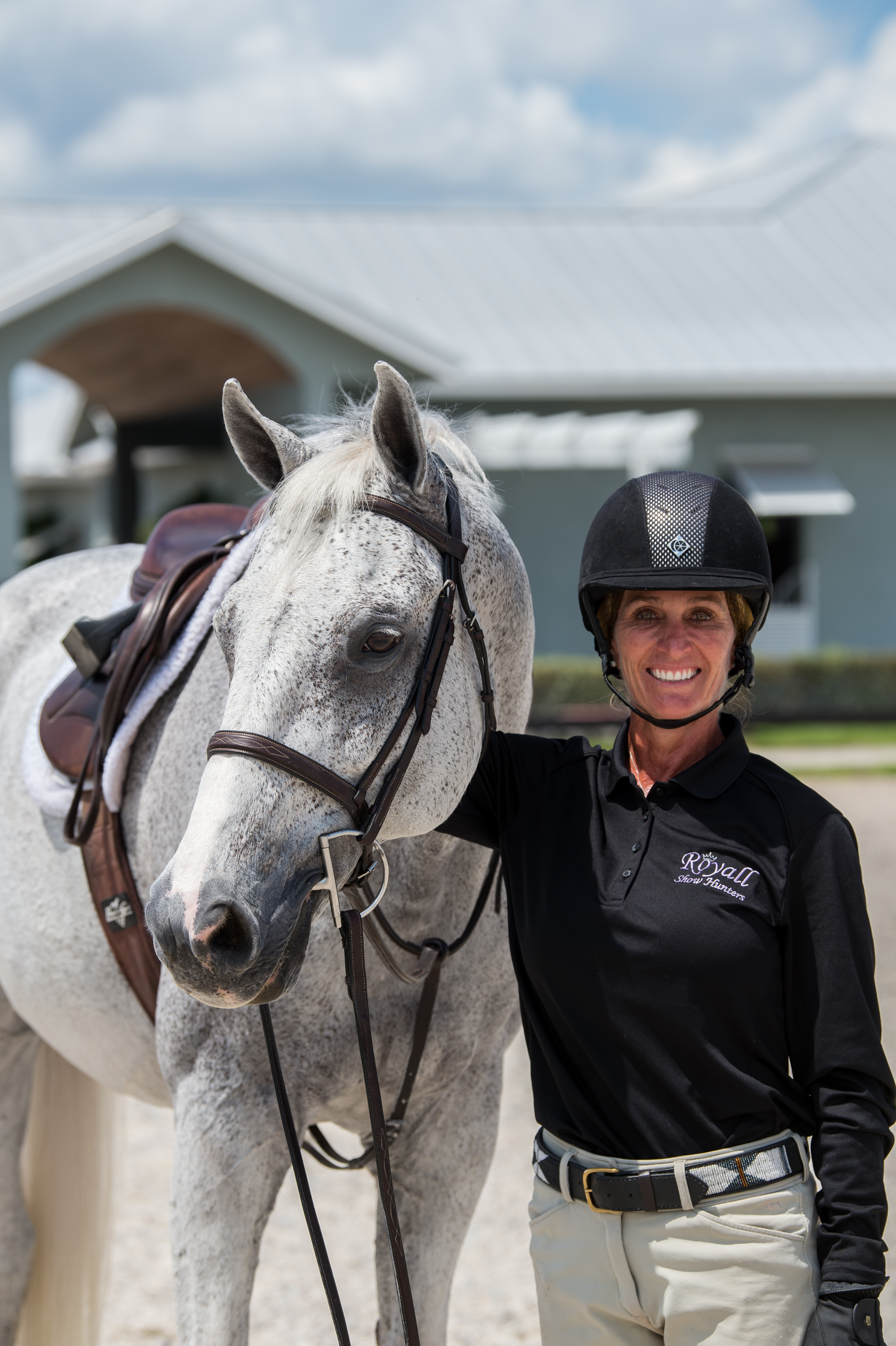
I caught up with Sandy at her home in Maryland after she finished her day of teaching lessons. Even after her long day, Sandy was still bubbling with energy and enthusiasm, was quick to laugh and made me feel right at home. But under that bright smile is a strong-willed hard worker. Sandy has faced her fair share of hardships—she is a breast cancer survivor, and she broke her back in a riding accident. During our chat, Sandy details the progression of her riding career, shares some of her hobbies and interests outside of riding and explains why she wears a safety vest every time she rides—even in the show ring. She also explains in detail why riding position and body control are so important and expands on some of the common problems and fixes with exercises from her recent article, “Hunter Riders: Equitation Counts!” in Practical Horseman’s summer issue.
You can listen to the full interview wherever you listen to podcasts, but in the meantime, below is a snippet of our conversation with some fun details about Sandy.
1. She loves to teach.
Sandy describes herself as old-school, and stresses the importance of horsemanship over riding. “The world has changed over the years in so many ways and I was brought up very old-school and I still continue to teach that way. I think that’s very important because a lot of times, when you’re in the horse show world it’s more about showing,” Sandy explains. “I do honestly feel that some of the horsemanship part has disappeared. If you were ever to interview any of my clients, they would tell you that I’m very old-school and it’s really truly about communicating with the horse and understanding what the both of you need together as a team and it’s not about winning; it’s not about finding the perfect jumps; it’s not about that. It’s the communication.”
Sandy also thinks it’s very important for up-and-coming professionals to experience the behind-the-scenes work that goes into producing a winner. “When I grew up, we as the professionals or trainers were still a part of the behind-the-scenes. Whether we mucked stalls or drove the truck and trailer, we were very much a part of that,” she says.
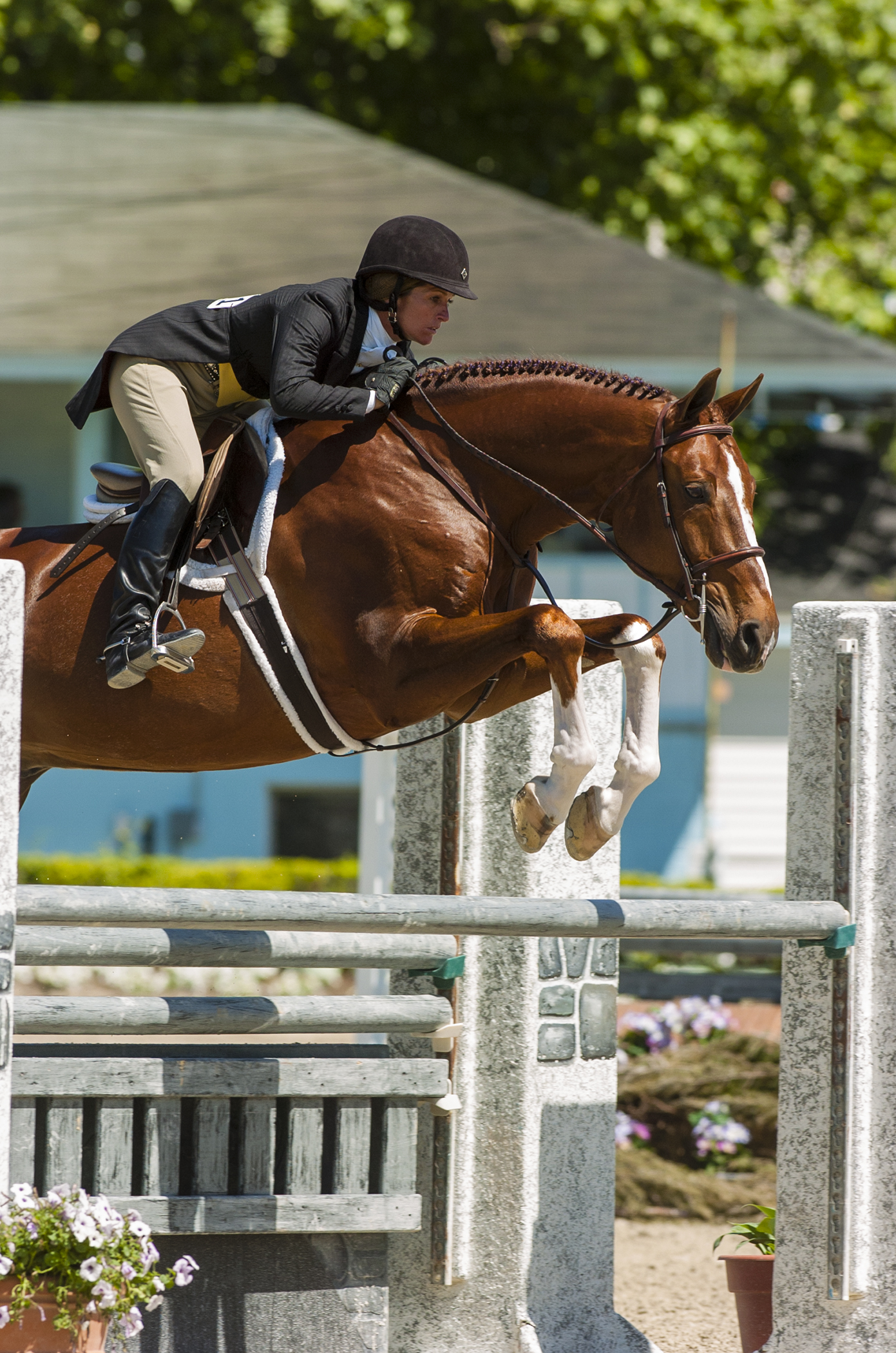
“One of my favorite times of the day is when I walk into the barn at night, say 6 o’clock, when everything is quiet and I just listen to the horses crunch on the hay and walk by the stalls and see how they’re standing. That’s how you learn so much about the behavior of the animals. So it’s really a lot of that old-school, behind-the-scenes, forget the riding—that’s the easy part. It’s everything else,” she continues.
As for riders, Sandy says it’s about the body position and control, and that’s really what she focus on all the time with her clients. She believes that correct equitation means you can make good things happen on course because of—not in spite of—your position. To develop classical style, you need to feel and experience how good form helps both you and your horse every time you perform. For more on solutions to common equitation problems, see Sandy’s recent training feature, “Hunter Riders: Equitation Counts!”
2. She took up ballroom dancing and it changed her perspective on teaching.
“Later in my career I took up ballroom dancing. It was on my bucket list, it was a good time in my life and I wanted to do something different,” Sandy explains.
It quickly became apparent to Sandy that there are parallels between dancing and riding. “There’s very few sports where it’s just the two of you. Dancing is one of them and riding is one of them. In other sports you’re either by yourself or you’re with a team,” she says.
“I immediately became the most horrible, low adult dancer. I cried. I quit. I said, ‘I can’t do it.’ I was scared,” Sandy recalls. But she soon realized that putting herself in a position where she was scared to death to do something different ended up being helpful for her as a teacher.
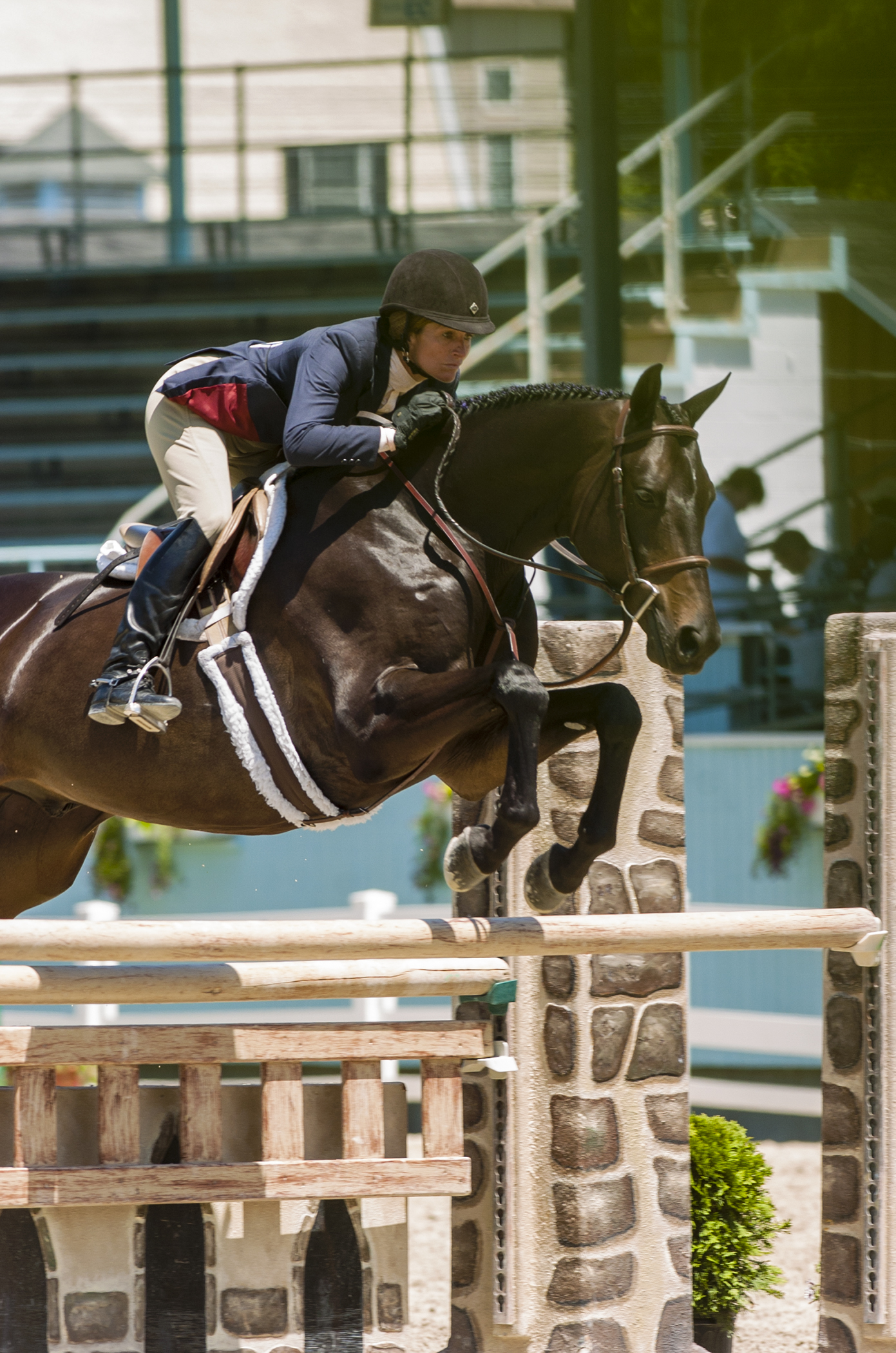
“It gave me such a different level of compassion for someone who was scared because I didn’t know fear about riding. But then going and doing that ballroom dancing and exposing myself to failure, it just totally turned some different lightbulbs on. So now when someone tells me they’re scared to death, I have now felt that and I learned how to talk them through that a little bit better and use dancing as a tool to understand people who are fearful,” Sandy explains. “I would recommend to anybody to go do something that’s totally out of your comfort zone. It gave me confidence in so many different ways but it just transformed my philosophy of teaching because I know now what it felt to be scared.”
3. She loves golf.
Sandy says she’s always loved golf and loves watching the big tournaments. “I think it’s like anything—you think, how hard can it possibly be?And golf is brutal. I have zippo natural talent,” Sandy laughs. “I don’t know how many balls I lose every day that I play, but I go to that driving range and I practice, and I practice and I practice. I still love it. For every great shot I hit, I hit probably 25 bad shots. But it’s just that one shot—it’s like that one blue ribbon—that keeps you coming back. That would probably be the next thing [after riding] that I love to do the most.”
4. She wears a safety vest every time she rides.
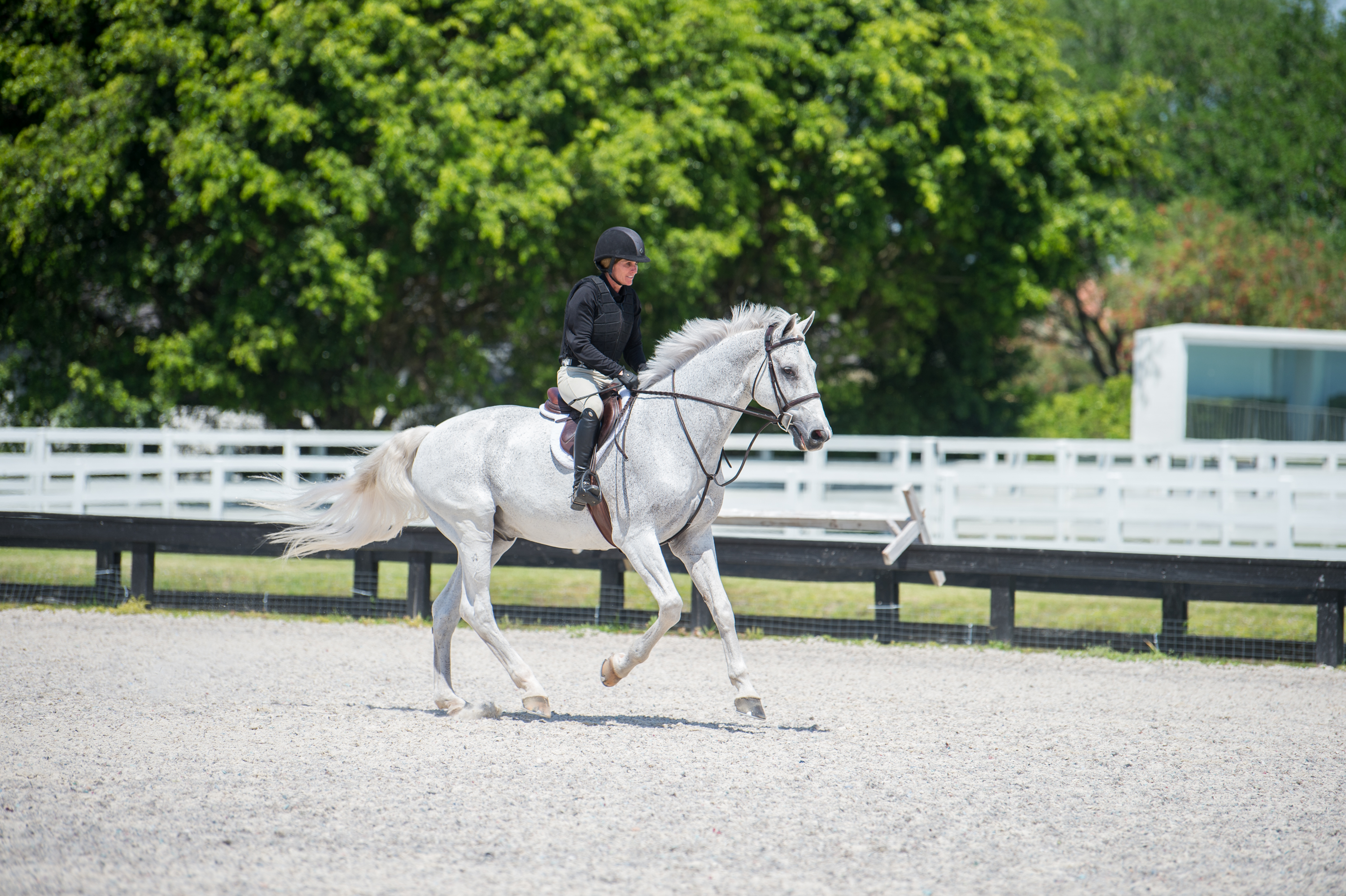
In 2015, Sandy broke her back in a riding accident. After the fall, a friend and client of Sandy’s encouraged her to wear a safety vest and she thought, why not? The following year, Sandy was at the Capital Challenge and went to put on her vest and the zipper broke. She figured she would be fine and that nothing would happen. But on the Sunday before the show started, Sandy was cantering a horse and he stumbled and fell on her and she had to have surgery on her hand.
“I thought, I’m pretty sure God is sending me a message right now. This is twice now. Put your vest on. And really since that time, I won’t get on a horse without it now,” Sandy says. “I truly believe in it.”
“It’s not that I’m trying to prove a point to anybody—it’s not about that,” Sandy explains. “But now for me, it’s become such a thing that I don’t feel safe without it and maybe it’s not going to save my life—it’s a little bit like a seatbelt—but I’m doing all I can to protect myself. And we do fall off. And for sure we’re all getting older. We don’t bounce as well as we used to when we were kids.”
Sandy remembers that the next year she was champion at Devon while wearing her safety vest. She went to Upperville right after Devon and a woman and her little girl approached her. The woman asked Sandy, “My daughter rides and I really want to get her a safety vest, but do you think they judges are going to count off for that?” Sandy told her that she just won champion at Devon the week before. “I think that would be silly for anyone to take off on a rider that’s just trying to protect themselves,“ Sandy says. “And I think that is a big thing in people’s minds, that it doesn’t look good, it’s not pretty, are the judges going to take off? Am I really going to fall off in the show ring?”
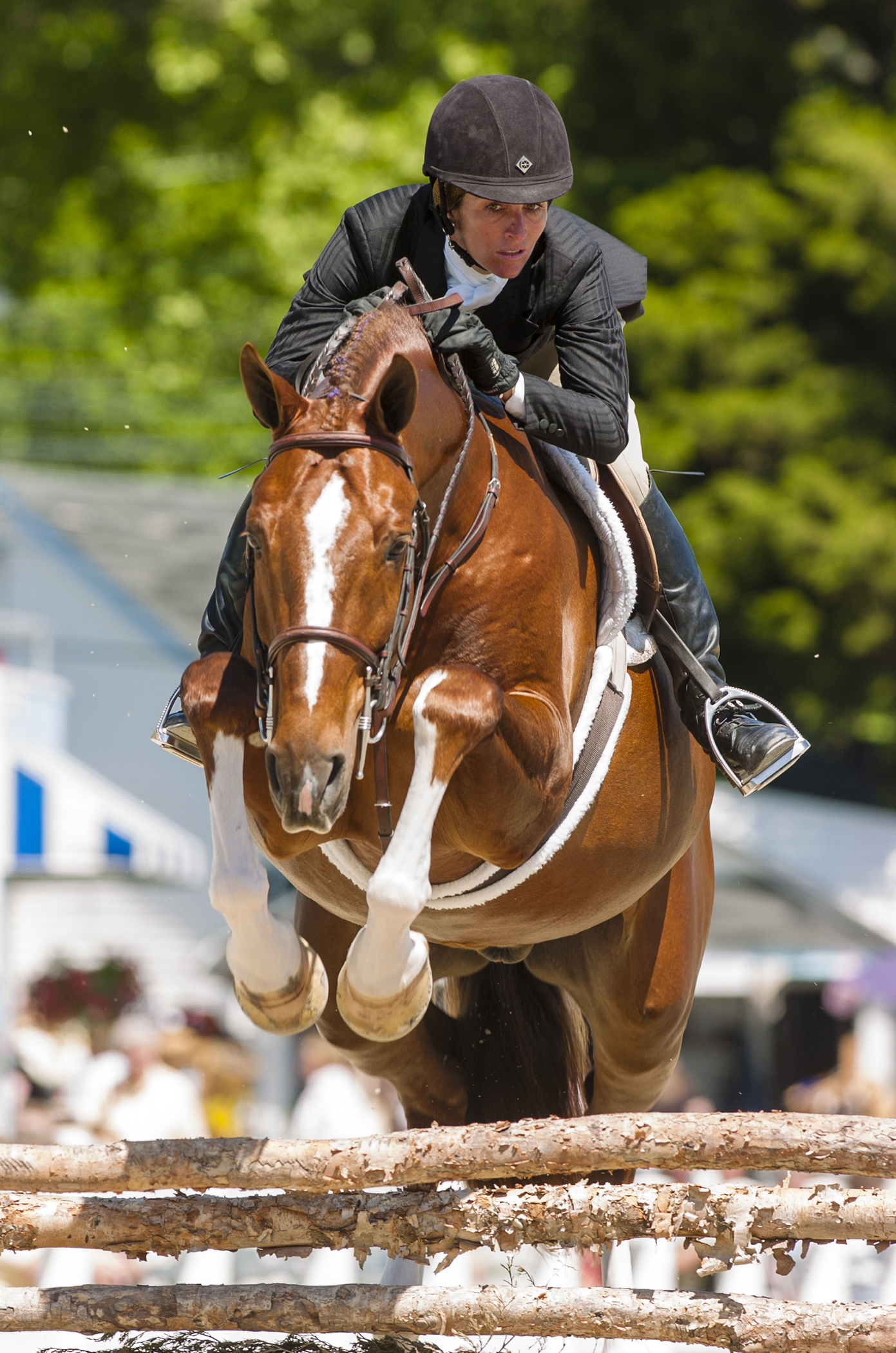
Then there are those that say they’re going to wear a safety vest at home, but not in the show ring, which doesn’t make sense to Sandy. “With a horse, you can fall at any point in time,” Sandy explains. “If you’re going to wear one, just wear one all the time. But to say you’re going to wear it at home, but not in the show ring says to me people are a little bit concerned of what it looks like or what their peers are going to think or their pictures aren’t going to be as pretty. It’s amazing to me that we’re not required to wear them because what we do is very dangerous and I think everybody in the horse world will agree. The worst falls are not involving a jump. It’s a horse stumbling. It’s a horse spooking. It’s getting bucked off. It doesn’t involve jumps. So anything can happen. It’s silly to me to say you’re going to wear it sometimes but not all the time. If you’re going to make the commitment to safety, make the commitment to safety.”
“Would I like not to have the vest on because I think it looks better and my pictures would be prettier? I’m all about that but at the end of the day, I know don’t ever want to ride without it because the safety factor is more important to me,” Sandy says. “I lucked out when I broke my back but that’s only going to happen so many times.”
5. She’s fascinated by criminal justice and the psychology of serial killers.
“I’m a huge, huge criminal justice person,” says Sandy. “I majored in criminal justice in college and I either watch Criminal Minds or Hallmark. And talk about two opposite spectrums—one is about love and romance and one is about serial killers!”
Sandy shared that if she didn’t ride and teach for a living, she would try to be on the Behavioral Analysis Unit for the FBI and do forensic pathology or something related to the psychology of serial killers.
“I’m always very interested in how people’s brains work,” Sandy explains. “Everybody’s brain works differently. I would love to study serial killers and what got them to that stage and how their brains work. It totally intrigues me.”
About this Podcast Episode’s Sponsor: The Evolution Leather Bits Collection by Metalab

The Evolution leather covered bits are a combination of modern technology and traditional workmanship. More than just a bit covered in leather, this collection utilizes an advanced Pinchless Joint System and ergonomically designed mouthpiece resulting in a series of comfortable but responsive bits that allow the horse to relax and to more readily respond to the rider’s aids. You can learn more about the Evolution Leather Bits Collection at www.partrade.com.
About the Practical Horseman Podcast

The Practical Horseman podcast, which runs every other Friday, features conversations with respected riders, industry leaders and horse-care experts to inform, educate and inspire. It is co-hosted by Practical Horseman editors Sandy Oliynyk, Emily Daily and Jocelyn Pierce. Future podcasts are with Olympic eventing legend Jim Wofford, top groom Liv Gude and Pan American Games gold medalist Boyd Martin. Find the podcast at iTunes, Stitcher and Soundcloud or wherever you get your podcasts.






